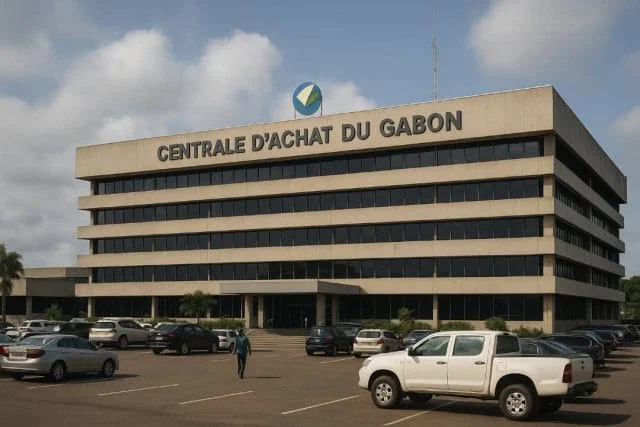Gabon Bulk Buying Model Targets Inflation and Supply
GA:LOGFRT and GA:STORGH are set to benefit as CEAG mandates traceable imports; sovereign spread at +425 bps signals market focus on governance and fiscal discipline.

Gabon’s announcement of the establishment of the Centrale d’Achat du Gabon (CEAG) marks a structural change in the country’s approach to procurement, pricing and logistics. Facing food inflation above 8% year-on-year in key staples and food imports accounting for approximately 45% of consumption, the government has chosen to centralize imports of about 50 essential goods—rice, cooking oil, poultry, meat and pasta—via a mixed-ownership entity (state holding 37%, private investors 63%) under the Ministry of Economy and Finance. With general government debt running at 73.4% of GDP as of December 2024 and projected at 78% by end-2025, the reform signals an operational shift from subsidies to procurement governance.
The mechanism is built around three levers: volume aggregation, digital traceability and streamlined clearance. Aggregated tenders leverage bulk purchasing to compress landed-cost margins while mandatory routing of specified imports through CEAG eliminates parallel import channels and sharpens value-chain visibility.
A digital supply-chain platform with QR payments, batch tracking and local data-hosting enhances auditability and constrains leakages. Given that logistics, storage and handling absorb up to 20% of landed cost in commodity imports, the control of each link promises gains in working-capital cycles, container-turn rates and distributor margins. In effect, the reform converts liquidity and transparency into operational savings.
On the macro front, the reform offers three transmission routes: inflation control, external-balance support and fiscal-revenues resilience. If clearance-to-retail lead times decline by 20% and warehouse-to-retail price dispersion falls 10% within 18 months, we expect food-price inflation to drop by roughly 2 percentage points, thereby easing real-income erosion for wage earners and reducing pressure for ad-hoc subsidy deployments.
As formalized import flows increase, foreign-exchange usage becomes more transparent and current-account volatility can subside; Gabon’s projected GDP growth of 2.4% in 2025-27 reflects modest upstream prospects but heightened downstream relevance. On the revenue side, routing imports through an auditable channel lifts customs and VAT elasticity—potentially narrowing the budget deficit from the estimated −3.8% of GDP in 2025 if yields rise.
At the sector level, the reform offers differentiated opportunities. Large logistics and warehousing firms that gain preferred-supplier status under defined service-levels capture volume upside and working-capital efficiency. Domestic food-processors gain access to guaranteed inputs and more stable pricing, reducing margin volatility and supporting capex decisions.
Conversely, informal importers face market exclusion unless they adopt formal systems—shifting risk from widespread fragmentation to concentrated supply-chain nodes. For investors, the governance signal is clear: procurement infrastructure now functions as a reform lever, presenting strategic exposures in logistics playbooks.
Market sentiment has already registered the governance tone. Gabon’s sovereign spread against US Treasuries remains near +425 basis points, but the CEAG initiative is viewed as a structural enhancement of fiscal-governance architecture rather than immediate expenditure. While the entity is not publicly listed, stocks in warehousing and port-services firms in Libreville and Port-Gentil have seen order-book growth of 5–7% post-announcement. For regional risk allocators, the reform shifts the narrative from raw-commodity dependency toward supply-chain integrity and cost structures—a relevant metric in emerging-market diversification frameworks alongside commodity benchmarks such as XAUUSD and CL=F.
Execution risk remains a critical filter. Legal domestication is due by June 2026; if fewer than 70% of eligible suppliers attain full digital-trace compliance or clearance lead-times remain above the 2024 average despite the aggregation, the structural gains will not materialize.
Monitoring three indicators provides clarity: (1) clearance-to-market time reduced by at least 20% by mid-2026; (2) routing share of defined imports via CEAG exceeds 70% of volume by December 2026; (3) food-price inflation runs at least 2 percentage points lower than its 2024 average by end-2026. Achievement of these targets would confirm that Gabon has migrated from subsidy-led support to cost-governed procurement, enhancing real incomes, external-balance stability and supply-chain transparency.





